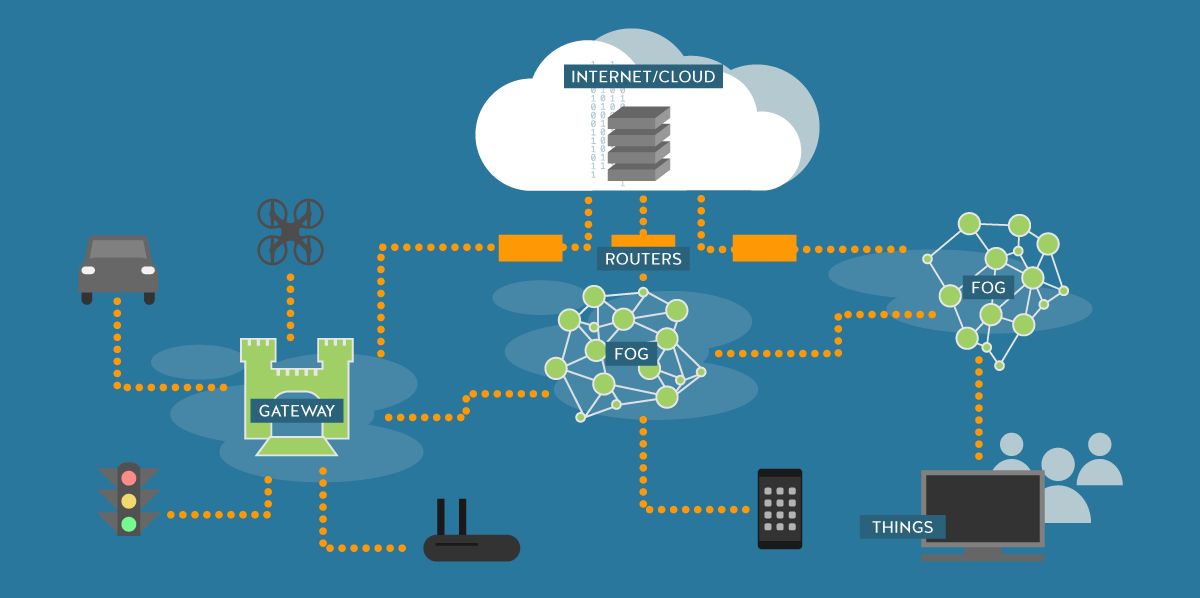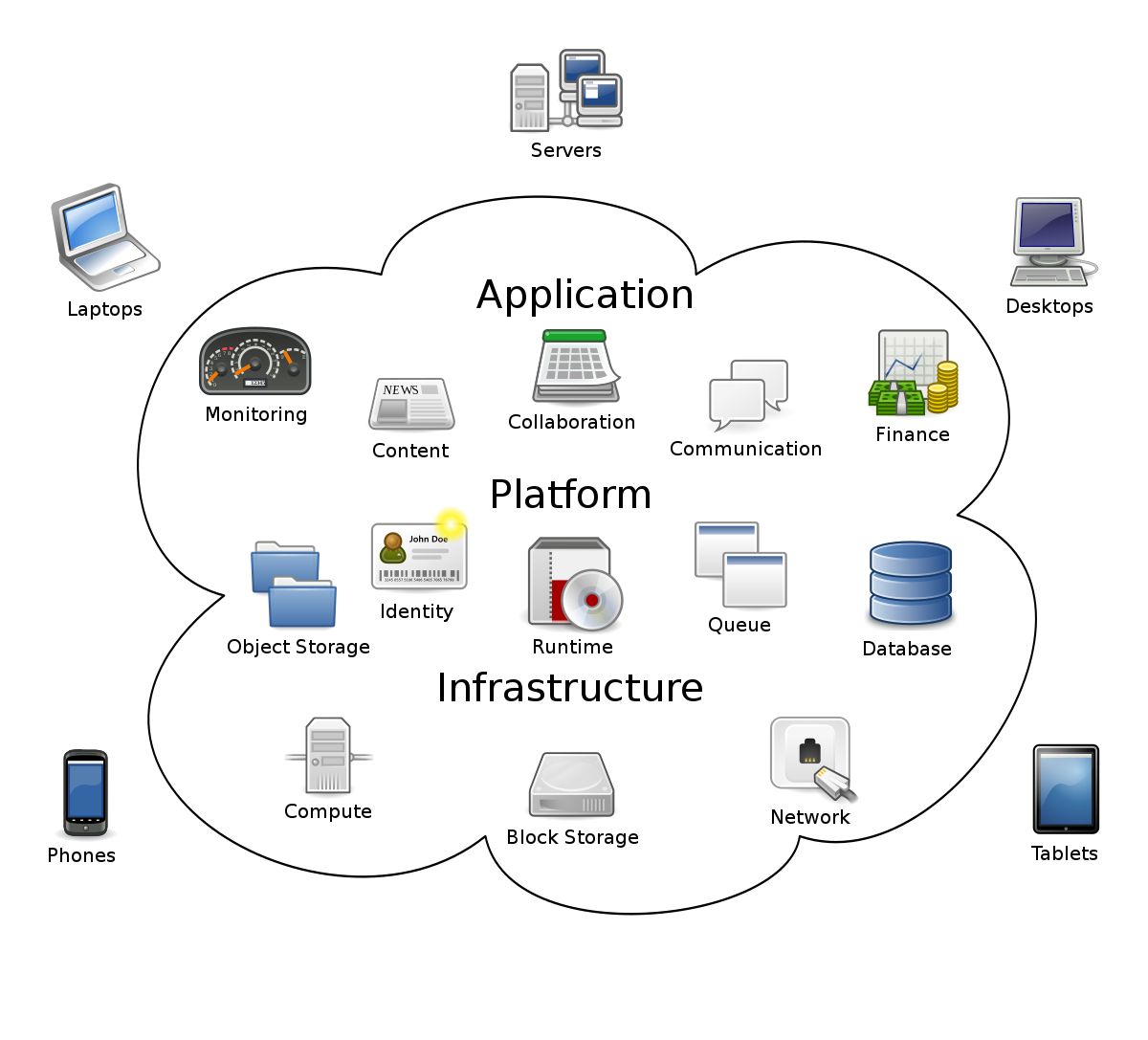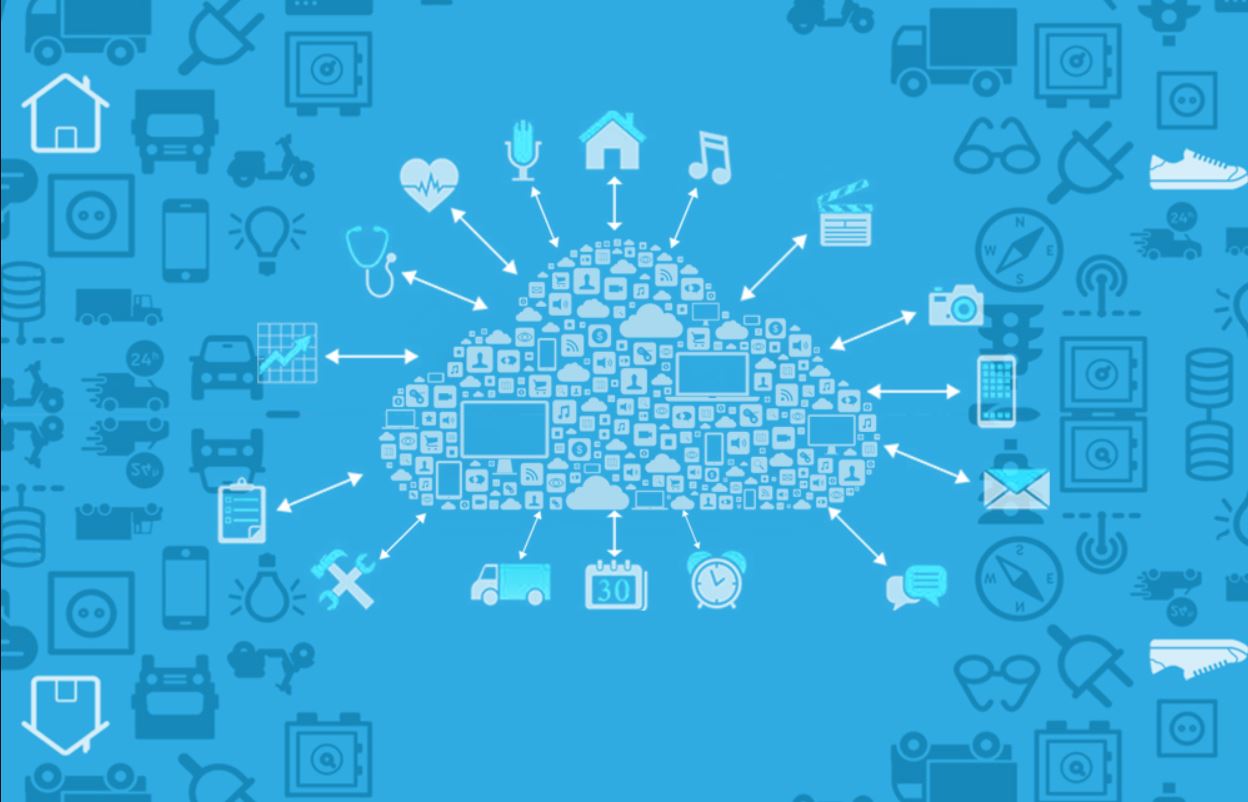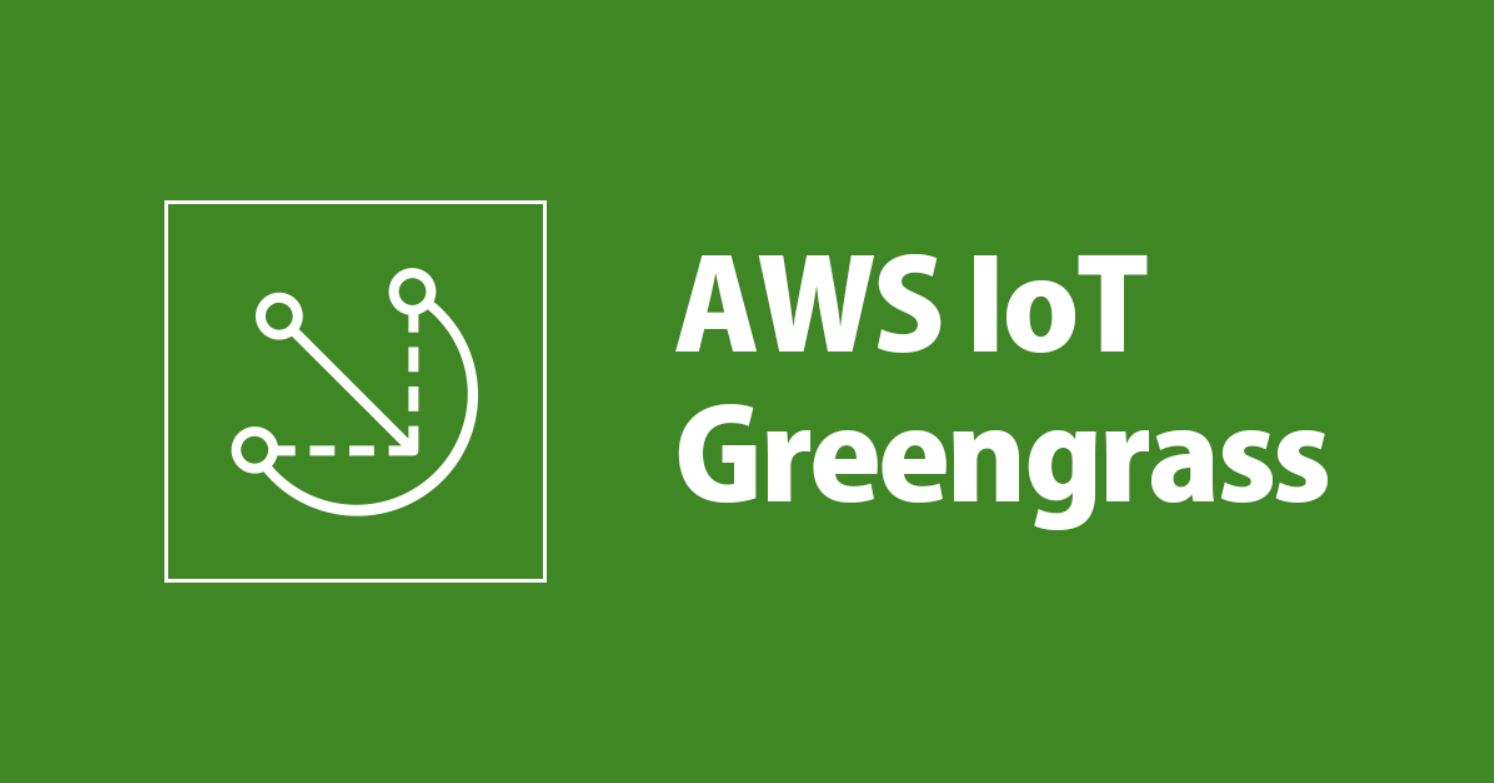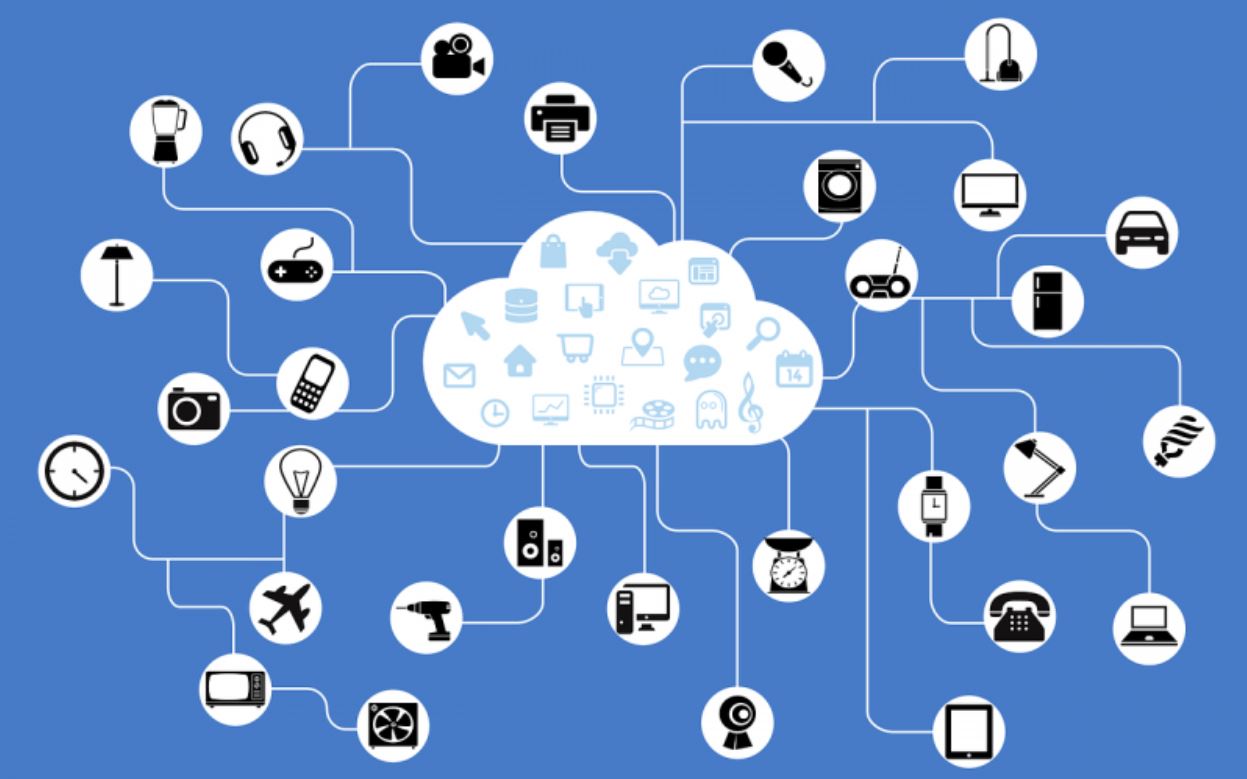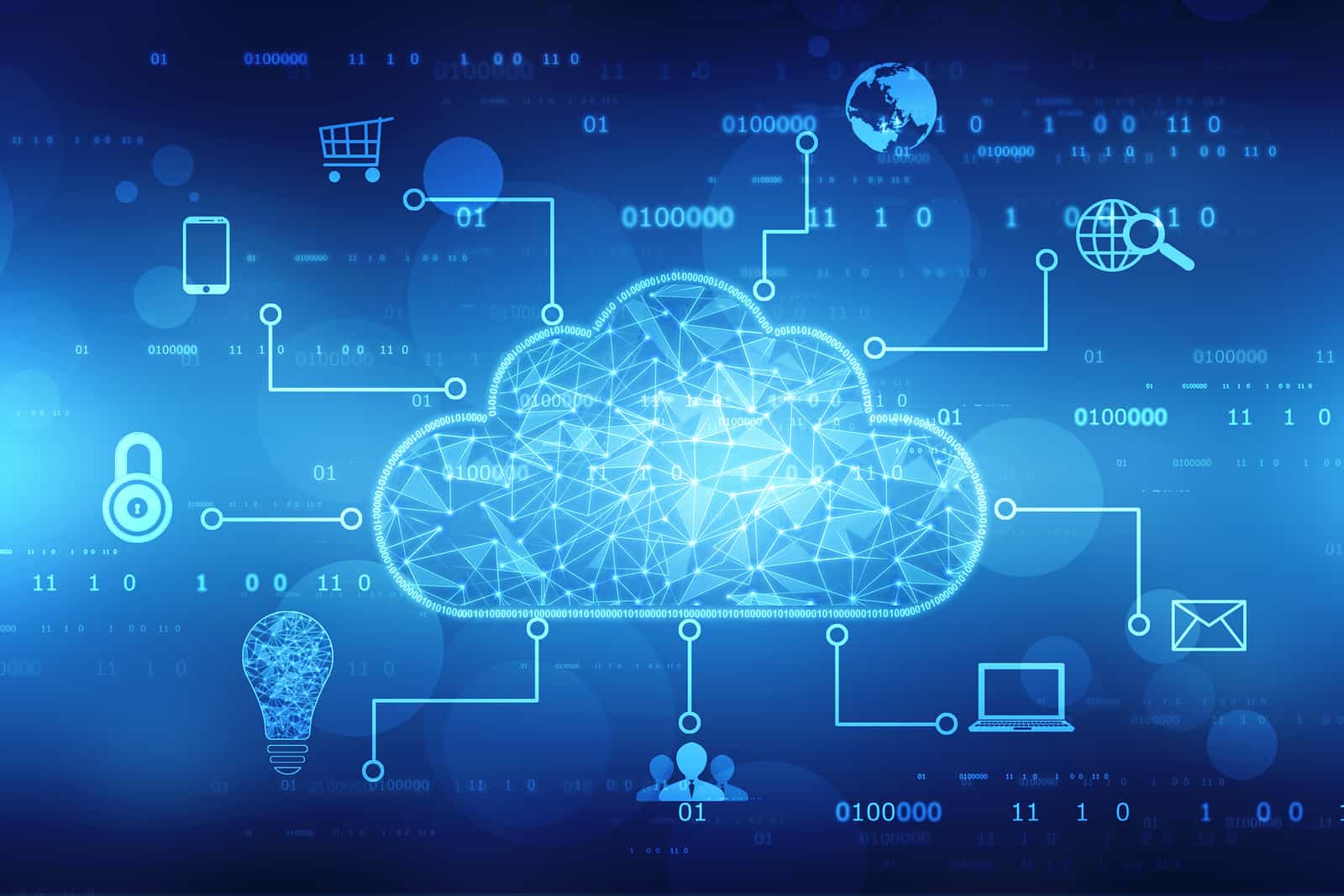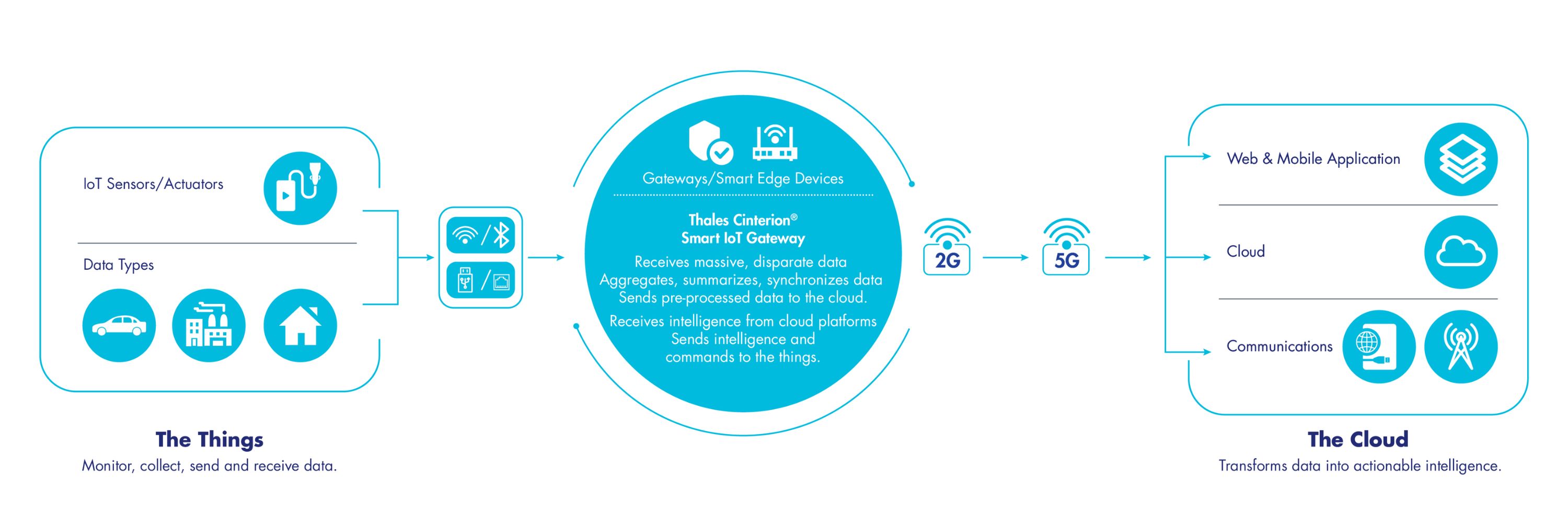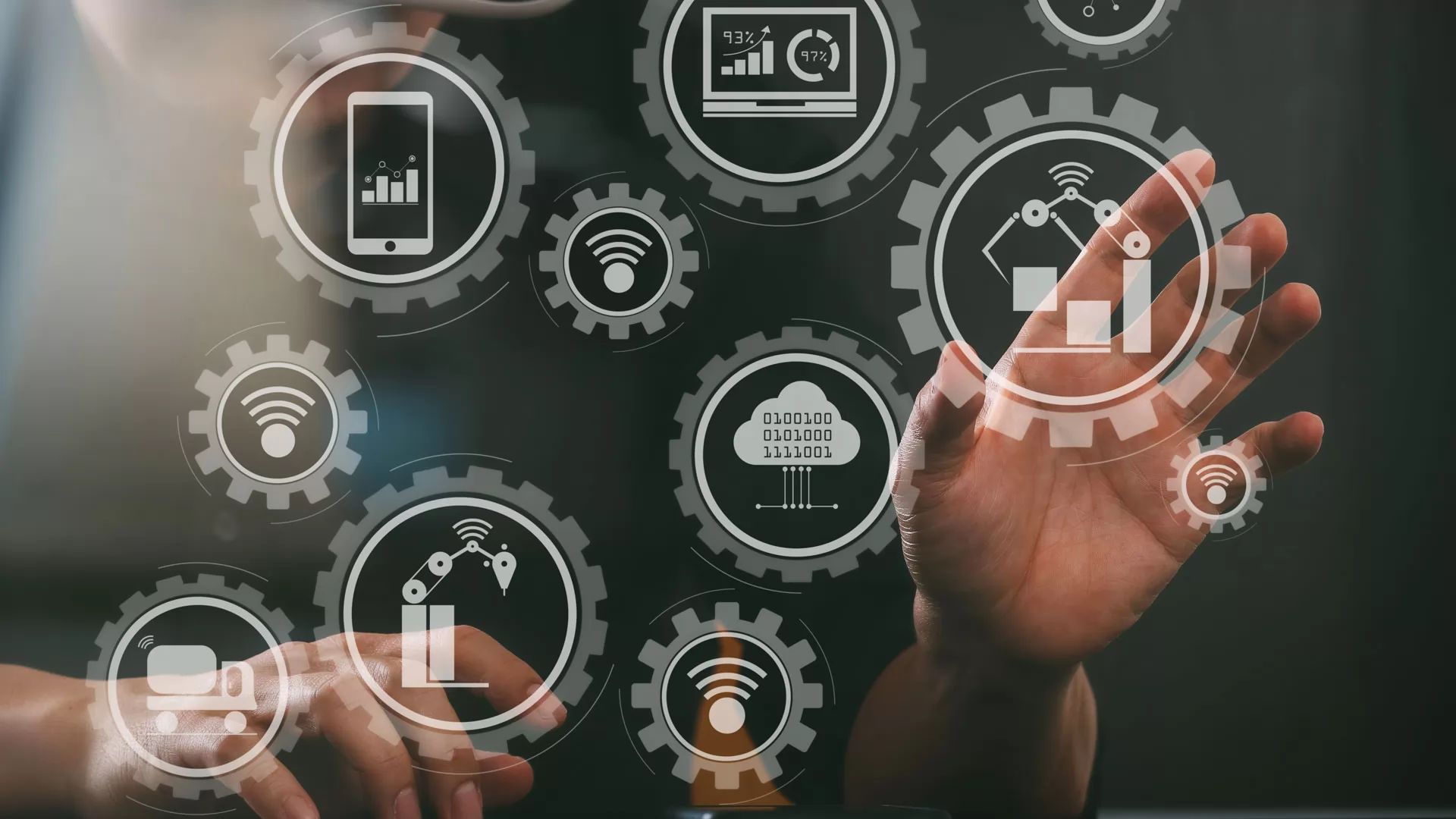Introduction
In today’s interconnected world, the Internet of Things (IoT) and cloud computing have emerged as key technologies driving the digital transformation of industries and businesses. They are revolutionizing the way we interact with and manage various devices, systems, and services. Understanding what IoT and cloud computing are, as well as their benefits and challenges, is crucial for businesses and individuals navigating the rapidly evolving landscape of technology.
The Internet of Things refers to a network of physical objects, vehicles, appliances, and other devices that are embedded with sensors, software, and connectivity, enabling them to collect and exchange data. These interconnected devices seamlessly communicate and interact with each other, without requiring human intervention. This network of devices is continuously growing, bringing a wide range of applications and possibilities to various industries, including transportation, healthcare, manufacturing, and agriculture.
On the other hand, cloud computing is a paradigm that involves the delivery of computing services, such as storage, processing power, and software applications, over the internet. Instead of relying on local infrastructure and resources, businesses and individuals can access and utilize the shared pool of computing resources provided by cloud service providers. This allows for on-demand scalability, flexibility, and cost-effectiveness, as resources can be easily provisioned or deprovisioned based on needs and usage patterns.
The convergence of IoT and cloud computing opens up a world of possibilities for businesses and individuals. By leveraging the power of the cloud, IoT devices can store and process vast amounts of data, enabling real-time analytics, predictive maintenance, and enhanced decision-making. The cloud provides a scalable and secure infrastructure for managing and analyzing the data generated by IoT devices, making it easier to derive valuable insights and drive innovation.
However, the adoption of IoT and cloud computing is not without its challenges. Security and privacy concerns, interoperability issues, and the sheer scale of data generated by IoT devices are some of the hurdles that need to be addressed. Additionally, ensuring reliable connectivity, managing device lifecycles, and avoiding vendor lock-in are critical considerations when implementing IoT and cloud solutions.
In the following sections, we will delve deeper into the benefits of IoT and cloud computing, explore how these technologies work together, and examine real-world examples of their use cases. By understanding the potential and limitations of IoT and cloud computing, businesses and individuals can make informed decisions and harness their power for greater efficiency, innovation, and success.
What is IoT?
The Internet of Things (IoT) is an interconnected network of physical devices, vehicles, appliances, and other objects embedded with sensors, software, and connectivity, enabling them to collect and exchange data. These devices, also known as “smart” devices, communicate with each other and with the internet, creating a vast network of connected systems.
The key defining feature of IoT is the ability of these devices to gather and share data without the need for human intervention. This continuous flow of real-time data allows for enhanced monitoring, control, and automation of various processes. The applications of IoT span across a wide range of industries, from healthcare and agriculture to transportation and manufacturing.
IoT devices are designed to sense, analyze, and act upon the information they gather. They can monitor environmental conditions, track location, measure physical activity, control appliances, and much more. For example, in the healthcare industry, IoT devices can monitor patients’ vital signs remotely, provide real-time notifications to doctors, and enable personalized healthcare interventions.
The power of IoT lies in its ability to create an ecosystem of interconnected devices that work collaboratively to provide valuable insights and improve efficiency. The data generated by IoT devices can be utilized in various ways. It can be analyzed to identify patterns, trends, and anomalies, enabling predictive maintenance and optimizing resource allocation. Moreover, the data can also be used to drive decision-making, enhance customer experiences, and foster innovation in product and service development.
To establish the communication and data exchange between IoT devices, various connectivity options are used, including Wi-Fi, cellular networks, Bluetooth, and Low-Power Wide-Area Networks (LPWAN). Each of these options has different characteristics that need to be considered based on the specific use case and requirements.
The growth of IoT is driven by advancements in technology, such as miniaturization of sensors, reduced costs of hardware components, and the availability of high-speed internet connectivity. Additionally, cloud computing plays a crucial role in enabling the scalability and processing power needed to handle the massive amounts of data generated by IoT devices.
In the next sections, we will explore the benefits and challenges of IoT and how it works in conjunction with cloud computing. We will also examine real-world examples of IoT applications, illustrating the potential impact of this transformative technology.
What is Cloud Computing?
Cloud computing is a paradigm that involves the delivery of computing services, including storage, processing power, and software applications, over the internet. Instead of relying on local infrastructure and resources, businesses and individuals can access and utilize a shared pool of computing resources provided by cloud service providers.
At its core, cloud computing provides on-demand access to a scalable and flexible infrastructure, enabling users to quickly provision or deprovision resources based on their needs. This eliminates the need for upfront investment in hardware and infrastructure, allowing businesses to benefit from cost savings and faster time-to-market.
There are three main types of cloud computing services: Infrastructure as a Service (IaaS), Platform as a Service (PaaS), and Software as a Service (SaaS). With IaaS, users have access to virtualized computing resources, such as virtual machines, storage, and networking. PaaS provides a platform for developers to build, deploy, and manage applications, without the need to worry about the underlying infrastructure. SaaS offers ready-to-use software applications that can be accessed via the internet, eliminating the need for installation and maintenance.
The benefits of cloud computing are manifold. Firstly, it offers scalability, allowing businesses to easily scale up or down based on demand. This is particularly important for businesses with fluctuating resource requirements or those experiencing rapid growth. Additionally, cloud computing provides flexibility, as resources can be accessed from anywhere with an internet connection, enabling remote work and collaboration.
Another key advantage of cloud computing is cost-effectiveness. With a pay-as-you-go model, businesses only pay for the resources and services they use, eliminating the need for upfront capital investment. This makes it accessible to businesses of all sizes, from startups to enterprises. Moreover, cloud computing enables faster deployment of applications and services, as resources can be provisioned almost instantly.
Security is a critical consideration in cloud computing. Cloud service providers employ advanced security measures to protect data and infrastructure. They implement rigorous security protocols, such as data encryption, firewalls, access controls, and regular backups, to ensure that data remains secure and confidential.
In summary, cloud computing provides businesses and individuals with the flexibility, scalability, and cost-efficiency needed to thrive in the digital age. By harnessing the power of the cloud, organizations can focus on their core competencies, drive innovation, and deliver their products and services more efficiently.
In the following sections, we will explore the ways in which cloud computing and IoT work together to create innovative solutions. We will also delve into the benefits and challenges associated with this convergence, as well as real-world examples of IoT and cloud computing in action.
Benefits of IoT and Cloud Computing
The convergence of Internet of Things (IoT) and cloud computing brings numerous benefits to businesses and individuals alike. Let’s explore some of the key advantages of leveraging these technologies together.
1. Scalability and Flexibility: Cloud computing provides on-demand scalability, allowing businesses to easily handle the growing number of IoT devices and the massive amount of data they generate. The cloud enables seamless expansion of storage and computing resources as needed, ensuring businesses can adapt to changing demands and scale their operations efficiently.
2. Data Analytics and Insights: IoT devices generate vast amounts of data, and cloud computing provides the computational power and storage capabilities required to process and analyze this data. By leveraging the cloud’s resources, businesses can derive valuable insights from the collected data, enabling better decision-making, predictive analytics, and data-driven optimizations.
3. Cost Efficiency: Cloud computing eliminates the need for businesses to invest heavily in infrastructure and hardware. Instead, they can leverage the cloud’s pay-as-you-go model, where they only pay for the resources they consume. This cost-effective approach allows businesses to optimize their expenses and allocate their budgets more efficiently.
4. Global Accessibility: Cloud computing enables remote access to IoT devices and data from anywhere with an internet connection. This global accessibility provides businesses and individuals with the ability to monitor and control their devices and assets remotely, enhancing productivity, efficiency, and convenience.
5. Improved Collaboration: The combination of IoT and cloud computing facilitates seamless collaboration between team members, departments, and even different organizations. The cloud-based platforms and tools enable real-time data exchange, sharing of insights, and joint decision-making, promoting effective communication and teamwork.
6. Enhanced Security: Cloud service providers invest heavily in robust security measures to protect data and infrastructure. By leveraging the cloud’s security features and protocols, businesses can ensure the confidentiality, integrity, and availability of their IoT data, reducing the risk of security breaches and unauthorized access.
7. Rapid Deployment and Innovation: Cloud computing accelerates the deployment of IoT solutions, enabling businesses to bring their products and services to market faster. The cloud’s infrastructure-as-a-service (IaaS) and platform-as-a-service (PaaS) capabilities provide a ready-to-use environment for developing and deploying IoT applications, reducing development time and costs. This rapid deployment fosters innovation and allows businesses to stay ahead in the competitive market.
Incorporating IoT and cloud computing into business operations can yield numerous benefits, from cost savings and improved efficiency to enhanced data analytics and global accessibility. By harnessing the power of these technologies, businesses can optimize their processes, drive innovation, and deliver exceptional customer experiences. In the next sections, we will explore the challenges associated with IoT and cloud computing and how businesses can successfully navigate them for maximum effectiveness.
Challenges of IoT and Cloud Computing
While the convergence of Internet of Things (IoT) and cloud computing offers numerous benefits, there are also several challenges that businesses and individuals need to address. Let’s explore some of the key challenges associated with these technologies.
1. Security and Privacy: With the proliferation of IoT devices and the flow of sensitive data, security and privacy become critical concerns. Protecting IoT devices from malicious attacks and ensuring the confidentiality and integrity of data requires robust security measures, including encryption, authentication, and access controls. Additionally, complying with data privacy regulations, such as GDPR, can be complex, especially when dealing with data collected from multiple sources and shared across different cloud services.
2. Interoperability: The heterogeneity of IoT devices and platforms poses a significant interoperability challenge. Different devices and applications may use different protocols, standards, and communication interfaces, hindering seamless connectivity and data exchange. Achieving interoperability requires industry collaboration and the adoption of widely accepted standards, ensuring compatibility and ease of integration across various IoT systems.
3. Scalability and Data Management: The exponential growth in the number of IoT devices generates massive amounts of data. Effectively managing and analyzing this data in real-time presents scalability and storage challenges. The sheer volume, variety, and velocity of data require robust data management strategies, including data storage, processing, and analytics capabilities, to extract value and derive meaningful insights.
4. Reliable Connectivity: IoT devices rely on stable and reliable connectivity to function effectively. Issues with network coverage, latency, and bandwidth can disrupt data transmission, leading to operational inefficiencies or even complete device failure. Addressing connectivity challenges often involves choosing the appropriate communication protocols, selecting reliable network providers, and implementing redundancy measures to ensure uninterrupted connectivity.
5. Managing Device Lifecycles: IoT devices have varying lifecycles, and managing them throughout their lifecycle poses challenges. This includes device provisioning, firmware updates, maintenance, and decommissioning. Proper device lifecycle management ensures security, performance, and compatibility, and requires effective device management platforms and processes.
6. Data Ownership and Governance: As IoT devices generate and transmit data, issues related to data ownership, governance, and control arise. Determining who owns the data and how it can be used and shared can be complex, particularly when multiple entities are involved in the IoT ecosystem. Establishing transparent data governance policies and agreements is crucial to address these challenges.
7. Vendor Lock-in: Adopting cloud services for IoT applications can give rise to vendor lock-in, where businesses become heavily dependent on a particular cloud provider’s ecosystem. Changing providers or migrating to different cloud platforms can be challenging and costly. To mitigate this risk, businesses should consider interoperable solutions and leverage open standards wherever possible.
Addressing these challenges requires a comprehensive strategy that encompasses security, interoperability, scalability, data management, and governance. By proactively addressing these challenges, businesses can fully harness the potential of IoT and cloud computing while ensuring the reliability, security, and effectiveness of their operations.
How IoT and Cloud Computing Work Together
Internet of Things (IoT) and cloud computing are interconnected technologies that work in tandem to enable innovative solutions and drive digital transformation. Let’s explore how they collaborate to deliver powerful capabilities and enhance various industries and applications.
IoT devices collect vast amounts of data from sensors and other sources. This data needs to be stored, processed, and analyzed to derive meaningful insights. Cloud computing provides the infrastructure, storage, and computing resources required for these tasks. By utilizing cloud services, businesses can scale their data storage and processing capabilities according to the volume and velocity of the data generated by IoT devices.
The cloud’s scalability allows for efficient management of IoT deployments, as businesses can easily adapt to changing demands and handle sudden increases in data volume. Cloud-based platforms and services provide the tools and infrastructure required for real-time analytics, predictive maintenance, and machine learning algorithms, enabling businesses to uncover patterns, anomalies, and trends from the data collected by IoT devices.
The cloud also provides a secure and centralized storage solution for IoT device data. Instead of relying on local storage, which may be limited in capacity and vulnerable to failures, businesses can leverage the cloud’s robust data storage capabilities. Cloud storage ensures data availability, even in the event of device failures, making it easier to manage and access data generated by IoT devices from anywhere and at any time.
Furthermore, cloud computing enables the seamless integration of IoT data with other data sources, such as enterprise systems, third-party platforms, and external APIs. This integration allows for a holistic view of data, enabling businesses to combine and analyze data from diverse sources, providing a comprehensive understanding of their operations and facilitating data-driven decision-making.
In addition to data storage and processing, the cloud also facilitates device management and updates. Through the cloud, businesses can remotely monitor, manage, and update IoT devices, ensuring firmware upgrades, security patches, and bug fixes can be deployed efficiently. This remotely-managed device lifecycle management reduces costs and improves operational efficiency, as businesses can avoid physically accessing and maintaining each individual device.
Integration with the cloud also opens up opportunities for IoT device manufacturers to deliver software updates and new features to their devices, enhancing their functionality and extending their lifespan. The cloud allows for Over-The-Air (OTA) updates, enabling manufacturers to continuously improve and adapt their devices based on user feedback and evolving needs.
The synergy between IoT and cloud computing is driving innovation and transforming industries. They enable the development of smart homes, connected vehicles, intelligent healthcare systems, industrial automation, and much more. By combining the power of IoT and cloud computing, businesses can optimize their operations, drive efficiency, enhance decision-making, and deliver innovative products and services in an increasingly connected world.
Examples of IoT and Cloud Computing in Action
The combination of Internet of Things (IoT) and cloud computing has given rise to numerous innovative applications across various industries. Let’s explore some real-world examples that demonstrate the transformative power of these technologies.
1. Smart Home Automation: IoT devices, such as smart thermostats, security cameras, and connected appliances, can be integrated with cloud platforms to create smart homes. Homeowners can remotely control and monitor their devices, access real-time energy consumption data, and receive alerts on their smartphones. Cloud-based voice assistants, like Amazon Alexa or Google Assistant, further enhance the convenience and automation by providing voice-controlled interactions with IoT devices.
2. Connected Healthcare: In healthcare, IoT devices and cloud computing are transforming patient care. Wearable devices, such as fitness trackers and smartwatches, monitor vital signs and fitness levels, sending the data to the cloud for storage and analysis. Cloud-based healthcare platforms can provide personalized insights, generate alerts for abnormal readings, and facilitate remote patient monitoring, leading to proactive healthcare interventions and improved patient outcomes.
3. Smart Cities: IoT and cloud technologies are playing a vital role in building smart cities. Integrated sensor networks collect data on traffic congestion, air quality, waste management, and energy consumption. This data is processed in the cloud, enabling city authorities to make informed decisions to improve urban planning, optimize resource allocation, and enhance the quality of life for residents.
4. Industrial Automation: Industrial IoT (IIoT) and cloud computing are revolutionizing manufacturing processes. IoT devices, embedded within machinery, collect real-time data on performance, maintenance needs, and energy consumption. Cloud-based analytics platforms process this data to optimize operational efficiency, predict equipment failures, and enable remote monitoring and control of industrial processes. This results in reduced downtime, improved productivity, and more efficient resource utilization.
5. Smart Agriculture: IoT and cloud computing are transforming the agricultural sector. Sensors deployed in fields monitor soil moisture, temperature, and crop health, transmitting the data to cloud platforms. Farmers gain real-time insights into crop conditions, enabling them to optimize irrigation, fertilizer usage, and pest control. Cloud analytics can also provide predictive models, helping farmers make informed decisions and improve yield.
6. Fleet Management: IoT devices integrated with cloud platforms are deployed in vehicles to track location, monitor driver behavior, and gather vehicle performance data. This data is transmitted to the cloud for analysis, enabling companies to optimize routes, improve fuel efficiency, and enhance driver safety. Real-time tracking and monitoring also allow for efficient dispatching, delivery management, and proactive maintenance.
These are just a few examples of how IoT and cloud computing are transforming industries and revolutionizing everyday life. As technology continues to advance and businesses embrace digital transformation, we can expect even more innovative applications and use cases to emerge, further reshaping the way we live and work.
Conclusion
The convergence of Internet of Things (IoT) and cloud computing has ushered in a new era of connectivity and innovation. These technologies work together to drive digital transformation, offering numerous benefits and opportunities across industries.
IoT devices, with their sensors and connectivity, generate vast amounts of data that can be harnessed for valuable insights. Cloud computing provides the scalable infrastructure and computational power required to store, process, and analyze this data efficiently. By leveraging the cloud, businesses can unlock the full potential of IoT, enabling real-time analytics, predictive maintenance, and data-driven decision-making.
The benefits of IoT and cloud computing are diverse. Scalability, flexibility, and cost efficiency allow businesses to adapt to changing demands and optimize resource allocation. Global accessibility facilitates remote monitoring and control, enhancing convenience and productivity. Improved collaboration and enhanced security empower businesses to work efficiently and protect valuable data.
However, there are also challenges to address when implementing IoT and cloud computing solutions. Security, interoperability, reliable connectivity, and data management are critical considerations that require careful planning and robust strategies. Overcoming these challenges will be key to successfully leveraging the power of IoT and cloud computing.
Real-world examples showcase the transformative impact of IoT and cloud computing. From smart homes and connected healthcare to smart cities and industrial automation, these technologies are enabling businesses and individuals to achieve new levels of efficiency, productivity, and innovation.
As technology continues to evolve, embracing IoT and cloud computing will become even more crucial for businesses to stay competitive and meet evolving customer expectations. By understanding the potential and challenges of these technologies, businesses can take advantage of their combined capabilities to drive growth, optimize operations, and deliver exceptional experiences.
In conclusion, the combination of IoT and cloud computing provides an unprecedented opportunity for businesses to thrive in the digital age. By harnessing the power of connectivity, data analytics, and scalable infrastructure, organizations can transform their operations, drive innovation, and stay ahead in an increasingly connected and data-driven world.







